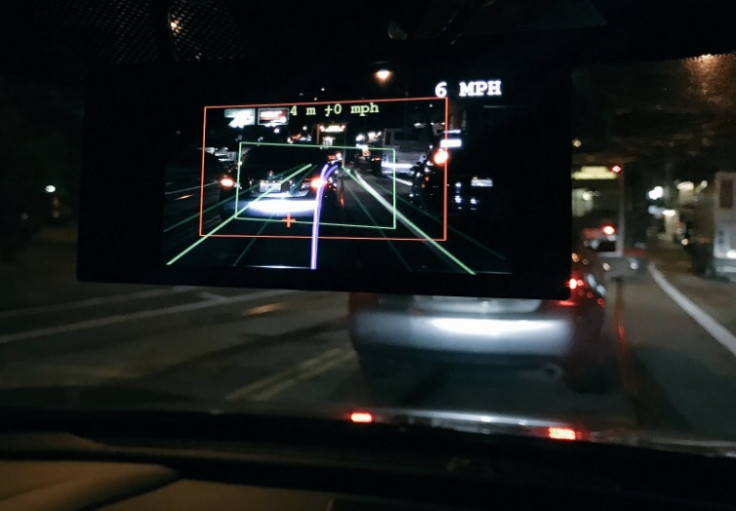How a US college kid made a DIY self-driving car for just £560
Brevan Jorgenson made his Honda Civic autonomous with smartphone and software created by George Hotz.

With just $700 (£560), a smartphone and some free software downloaded from the internet, a US university student has modified his car to drive itself.
Brevan Jorgenson used a OnePlus 3 smartphone and software created by a startup called Comm.ai and run by George Hotz, famous for being the first person to unlock the PlayStation 3 and original iPhone.
The phone sits in a homemade device attached to the interior rear-view mirror mount and, once connected to the car via a socket used by mechanics for diagnostics, can control the brakes, accelerator and steering. The phone's camera is used to spot traffic, road markings and keep the car in its lane.
Once Jorgenson had downloaded the free software, called Openpilot, he followed instructions produced by Comma to create a circuit board and 3D-printed case to house the phone and homemade electronics. The case was printed by an online service and, after struggling to solder the board himself, this was also bought online.
Hotz had originally hoped to sell the a plug-and-play version of his self-driving kit, called Neo, for $1,000 (£800) plus $24 per month on Amazon, but the US National Highway Traffic Safety Administration stepped in, cited safety concerns and convinced the hacker to change his mind. In December 2016 he made the software freely available online, and on the very first day Jorgenson downloaded it.

The DIY self-driving kit only works on automatic versions of the 2016 Honda Civic and Acura ILX for now, taking advantage of their electronic throttle, brakes and steering. All three can already be controlled by the car (for emergency braking, cruise control and the lane-assist safety feature), but Hotz's software takes control away from the car and gives it to the phone, software and homemade circuit board.
The Comma software allows the car to drive itself on motorways, staying in lane and a safe distance from the car in front. The modified car can also follow the vehicle ahead in stop-start traffic without human assistance. Unlike self-driving systems from Tesla and other car makers, Comma uses no lidar or radar systems and instead relies on the camera of the smartphone to see the world around it.
Jorgenson told MIT Technology Review about the first time he let the car drive itself, after an evening class at the University of Nebraska in late-January 2017. "It was dark on the interstate, and I tested it by myself because I figured if anything went wrong I didn't want anybody else in the car. It worked phenomenally."

The senior year student said how the car would occasionally pull to the right for no reason, but a software update issued by soon Comma fixed this.
Speaking to the Daily Mail, Jorgenson explained how he built the car to make the 1,000-mile round-trip to see his girlfriend in Denver easier. "The second main reason I wanted to upgrade my car was because I am a strong believer that self driving cars are the future and I wanted to be a part of making that a reality," he added.
© Copyright IBTimes 2025. All rights reserved.






















